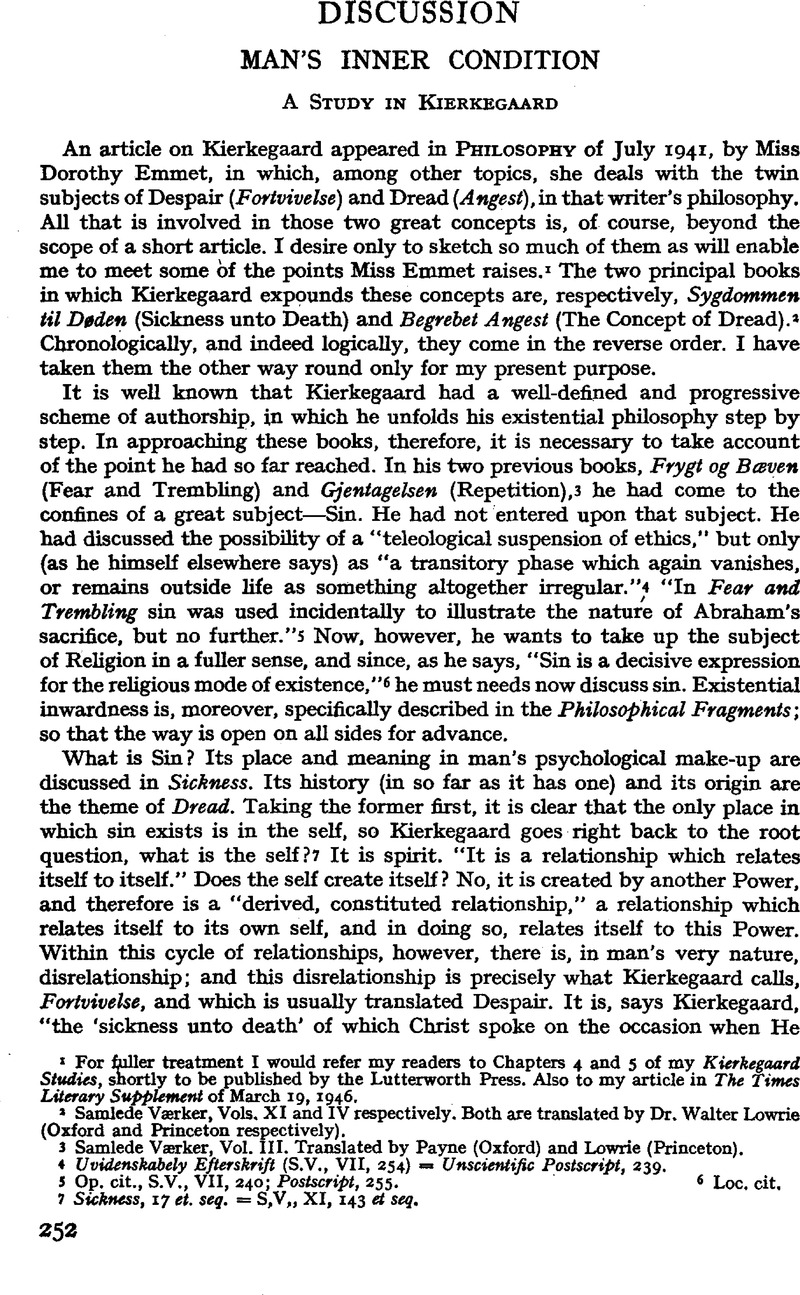No CrossRef data available.
Article contents
Man's Inner Condition: A Study in Kierkegaard
Published online by Cambridge University Press: 25 February 2009
Abstract

- Type
- Discussion
- Information
- Copyright
- Copyright © The Royal Institute of Philosophy 1947
References
page 252 note 1 For fuller treatment I would refer my readers to Chapters 4 and 5 of my Kierkegaard Studies, shortly to be published by the Lutterworth Press. Also to my article in The Times Literary Supplement of March 19, 1946.
page 252 note 2 Samlede Værker, Vols. XI and IV respectively. Both are translated by Dr. Walter Lowrie (Oxford and Princeton respectively).
page 252 note 3 Samlede Værker, Vol. III. Translated by Payne (Oxford) and Lowrie (Princeton).
page 252 note 4 Uvidenskabely Efterskrifl (S.V., VII, 254) = Unscientific Postscript, 239.
page 252 note 5 Op. cit., S.V., VII, 240; Postscript, 255.
page 252 note 6 Loc. cit.
page 252 note 7 Sickness, 17 et. seq. = S, V,, XI, 143 et seq.
page 253 note 1 John xi. 4.
page 253 note 2 Works of Love, 34 = Kjerlighedens Gjerningen. S.V., IX, 53.
page 253 note 3 To epitomize a great author is always difficult, and sometimes shameful; the more so the greater the author. A man may well hesitate therefore to epitomize Kierkegaard, of whom Reinhold Niebuhr writes (Nature and Destiny of Man, p. 195): “Kierkegaard's analysis of the relation of anxiety to sin is the profoundest in Christian thought.”
page 253 note 4 Just as Angst lies behind Fortvivelse, so the subject matter of The Concept of Dread lies behind that of Sickness unto Death. The latter deals with the despair which is sin, the former with Original Sin, which lies behind, and is the history of, actual sin.
page 253 note 5 Kierkegaard, p. 73.
page 253 note 6 Repetition, p, 34 (Gjentagelsen, S.V., II, 212).
page 254 note 1 Sophist, 237.
page 254 note 2 As we saw earlier that Despair places man above the beasts.
page 254 note 3 Sickness, 19, ai6 (Sygdomnen, S.V., XI, 144, 272).


